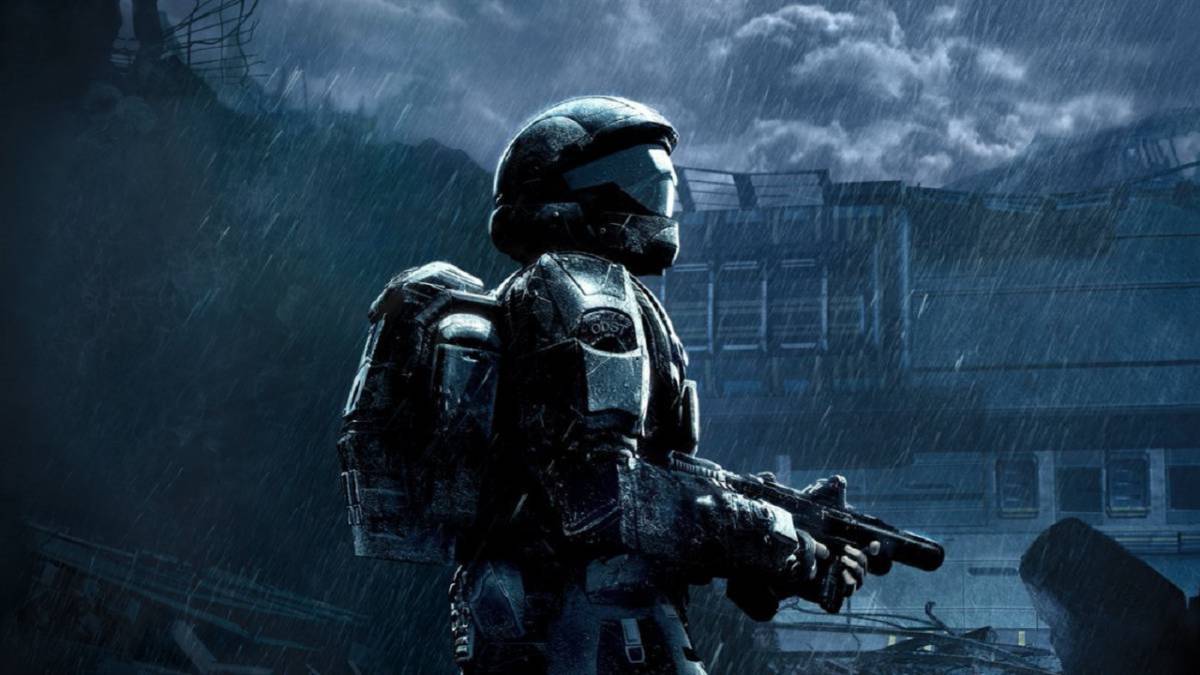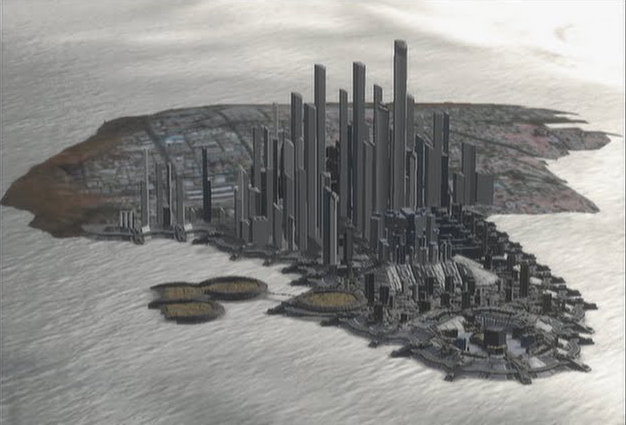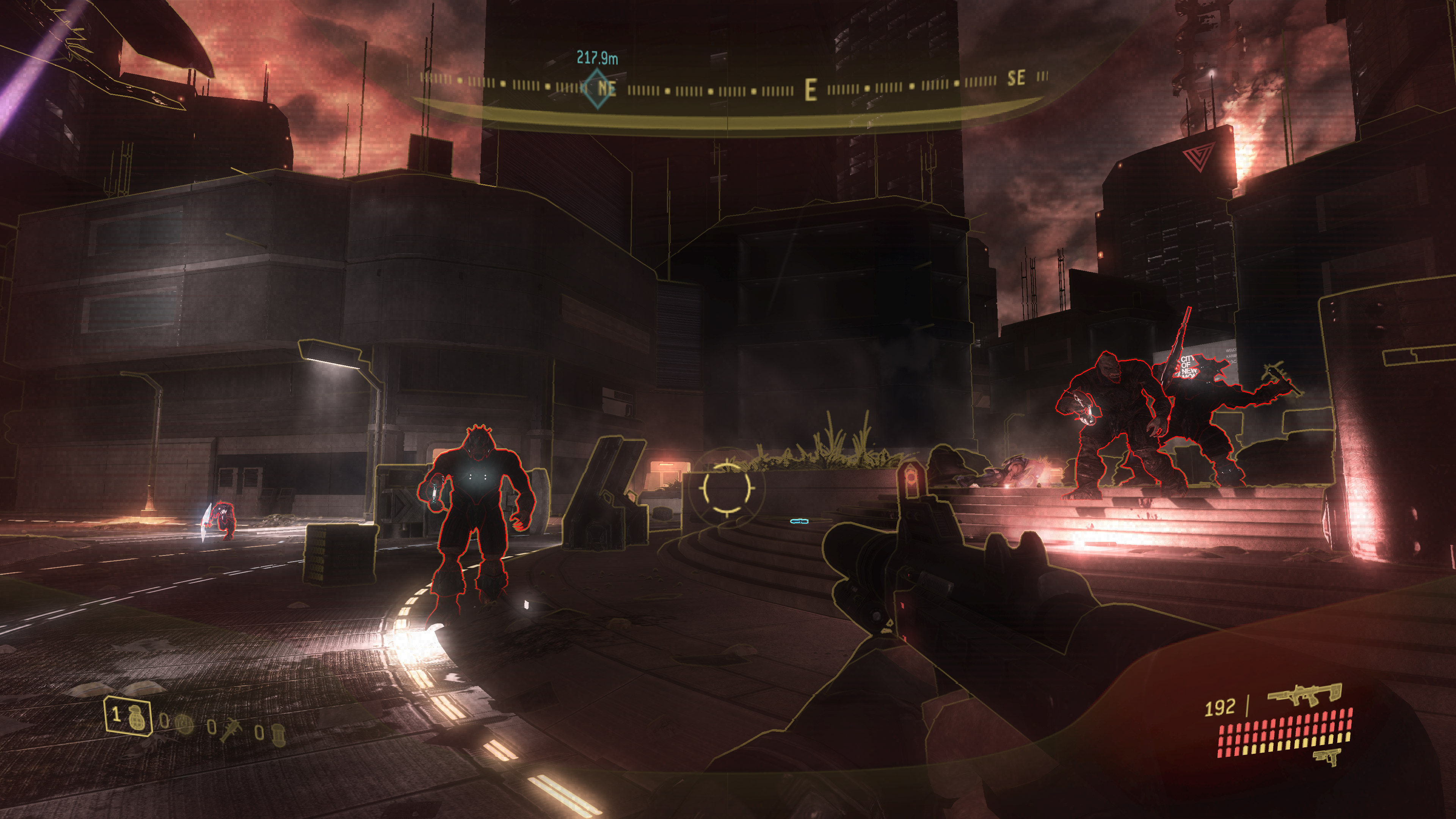

So as you probably know, you can only hold two weapons at a time. While we'll go more in-depth into each weapon on the next few pages, here's some general tips to get you started. As before, your overshield automatically regenerates if you can stay out of harm's way for four seconds. Once they're completely depleted (as indicated by your soldier wheezing for air), you need to find cover to let them replenish before your health bar takes the hit.

When you come under fire, your screen will turn increasingly red, indicating how close your shields are to failure. Thankfully, you'll find health packs scattered all over the place (whether embedded in wall terminals, kiosks, or even just lying on the ground) which will restore your health to prime condition. However, if your overshield buckles under intense gun fire, then your health bar's going to take a hit…and that doesn't recover. As long as your shield remains intact, your health won't sustain any damage. In short, in addition to your recharging overshield, you now have a health bar as well, displayed at the top of the screen.

The health system in ODST works a bit differently than it did in Halo 3…in fact, it's almost identical to the original Halo's. There's 30 of them scattered about the city, so keep an eye out for them. Interacting with these allows you to listen to an audio file, providing more back story on the ODST universe. However, you'll have to disable it in bright environments, asĪs you explore New Mombasa, you'll come across various Communication Stations that you'll notice are highlighted in bright yellow when using your visor. In low-light conditions, we recommend keeping it enabled at all times. This not only enables soldiers to see in low-light conditions, but the visor also highlights any objects of importance, such as outlining enemies in red or friendlies in green. After each mission, you'll be returned to the city where you'll then search for the next artifact.Īll ODSTs are equipped with a state-of-the-art, night-vision visor system. Whenever you locate one, you'll 'replay' that soldier's memories, which serve as the game's actual missions. As you work your way around, you'll come across artifacts left behind by other ODSTs. The city itself is relatively open, allowing you to traverse the streets in almost any direction. Basically, as a Shock Trooper who crash-landed off course, you'll explore New Mombasa city six hours after some serious stuff went down. Perhaps the most drastic change to ODST is the addition of an overworld, the city of New Mombasa. While the walkthrough provides situational-specific information, here's some quick info to prepare you for most combat situations.
#Halo 3 odst new mombasa how to

We realize it's a large burden to place on you lowly soldiers, but it's all we've got. Listen up shock-trooper, Master Chief is out running some errands, forcing us to rely on the likes of you to save New Mombasa city from certain destruction.


 0 kommentar(er)
0 kommentar(er)
